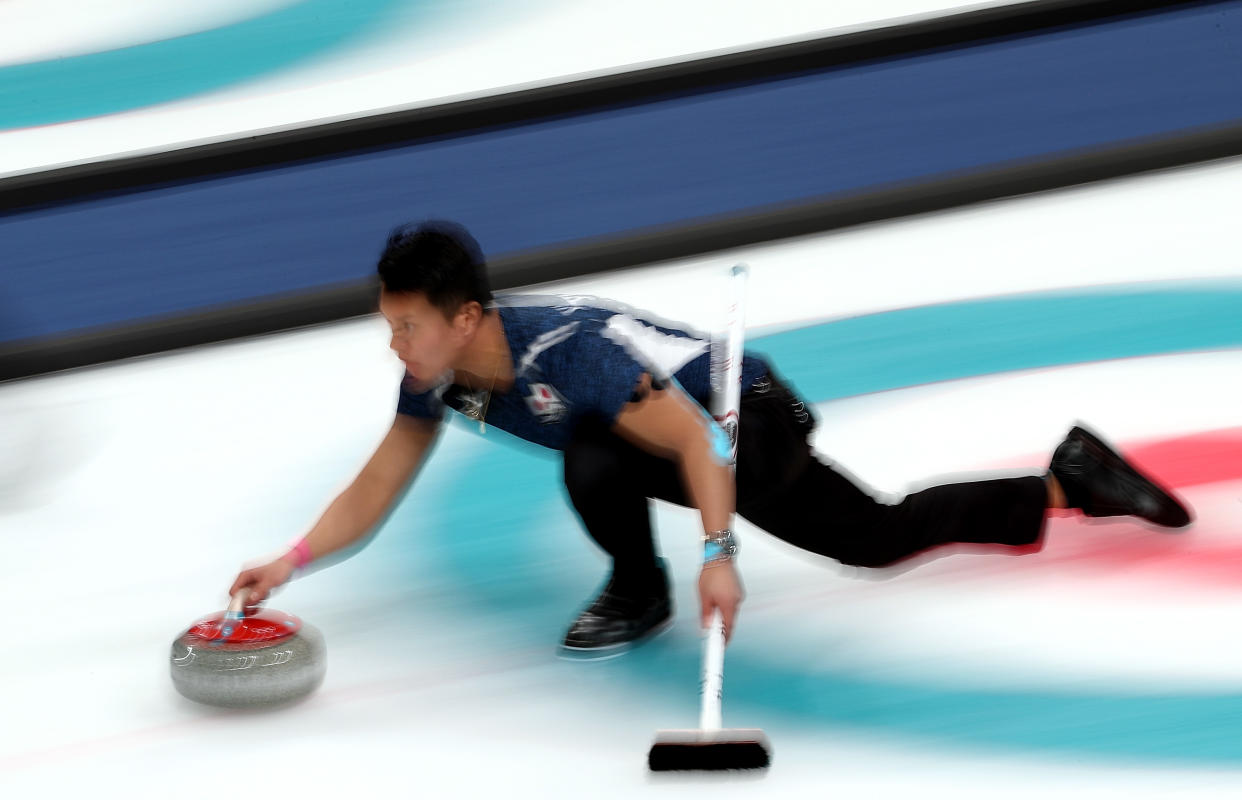Think you could be an Olympic curler? This impossibly bad throw suggests otherwise

So, you think curling is easy, huh? You’ve watched a few matches at the 2018 Winter Olympics, maybe even read up on the rules a bit, and think you’re ready to give it a try?
You’re almost certainly wrong. And this impossibly bad throw from a member of Japan’s Olympic team offers pretty compelling evidence:
일본 컬링의 기적의 마법샷ㅋㅋㅋㅋㅋㅋ pic.twitter.com/iV6AuR8psn
— 文派The SteelraiN_강철비 (@SteellraiN) February 21, 2018
Yep, that’s (supposedly) one of the best curlers in the world somehow taking out two of his own team’s rocks, both of which were hiding behind the two opponent rocks for which he was aiming.
Now, I don’t know curling that well, and you might not either, but it’s safe to assume that was not his intent. And the target set by his “skip” (teammate) before his throw seems to confirm the assumption. His goal was likely to leave the two red rocks “in the house” while taking out the two yellow ones. Instead, the opposite happened.
On one hand, the average person could throw a curling rock down the ice 100 times in that situation, trying to do what this Japanese curler did, and not be able to do so. Thus, you might think, Well then why couldn’t I be an Olympic curler?
On the other hand, the mistake shows just how fine the margins in curling are. It’s not as if the Japanese Olympian missed his mark by two feet. He missed it by, what, four or five inches?
He couldn’t afford to hit the yellow rocks head on, because they would have in turn taken out the red ones. He was aiming for the left side of them (thrower’s left), so as to knock them off cleanly to the right without scraping the red ones. He just missed, and the result was one of the most embarrassing throws of the Olympics.
That said, maybe it wasn’t the worst throw in the world? Japan escaped from the seventh end scoreless despite the mistake, and held on for a 6-4 victory. Maybe there was some veiled strategy behind it?
Curling experts, please feel free to correct me if I’m wrong.



